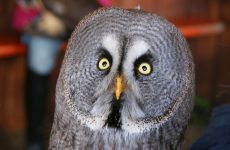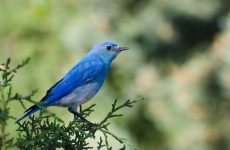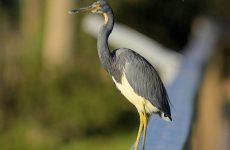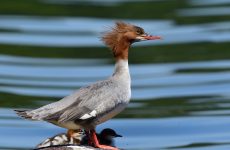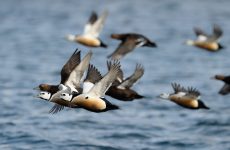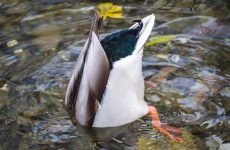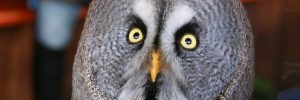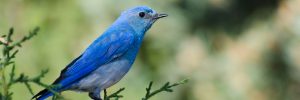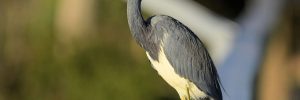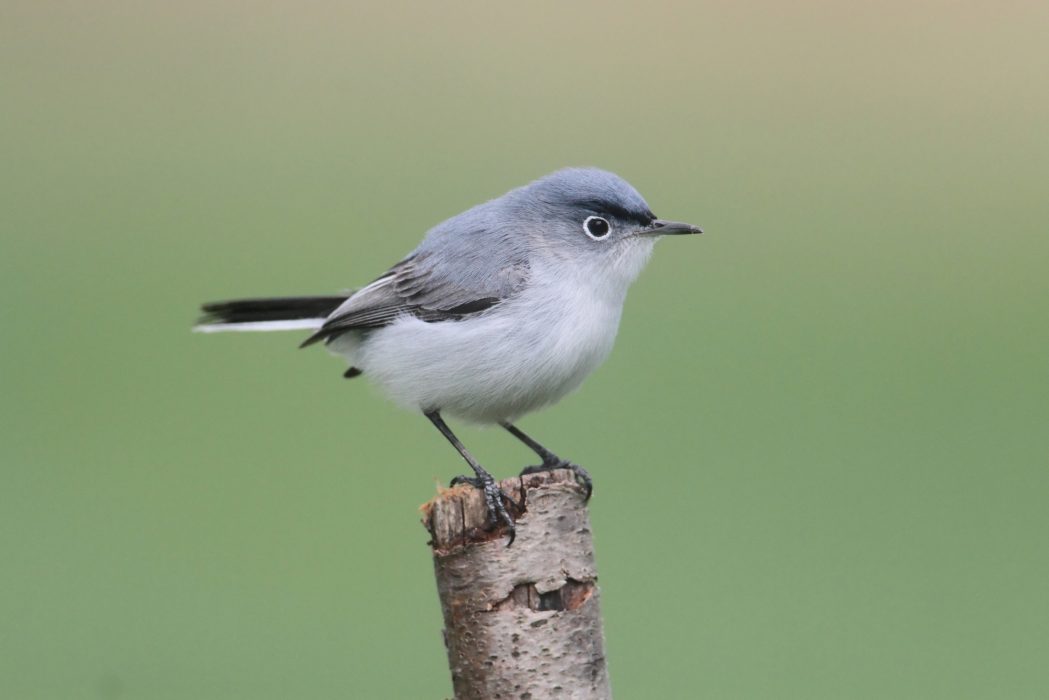
Small Gray birds are often flycatchers, chickadees and gnatcatchers, but the most common are Dark-eyed Juncos or Gray Catbirds.
These are the 12 most common gray birds you will see either in your backyard or when you are out in the woods and meadows.
These small birds are all 9 inches or less in length and are commonly spotted in the US and Canada, so don’t delay find out what that gray bird is now.
This site is reader-supported and as an Amazon Associate, I earn a commission if you purchase a product I recommend at no extra cost to you.
The best bird feeder to attract small birds without bully birds such as grackles eating all the seed is this Woodlink caged feeder as the cage is far enough away from the feeder to prevent bigger birds just putting their heads through.
Also, get a free picture ID printable for backyard birds for every state to really get you spotting.
12 Common Small Gray Birds
- Dark-eyed Junco
- Gray Catbird
- Black-capped Chickadee
- White-breasted Nuthatch
- Tufted Titmouse
- Northern Parula
- Carolina Chickadee
- Blue-Gray Gnatcatcher
- Willow Flycatcher
- Warbling Vireo
- Bushtit
- Eastern Wood-pewee
12 Small Gray Birds
1. Dark-eyed Junco
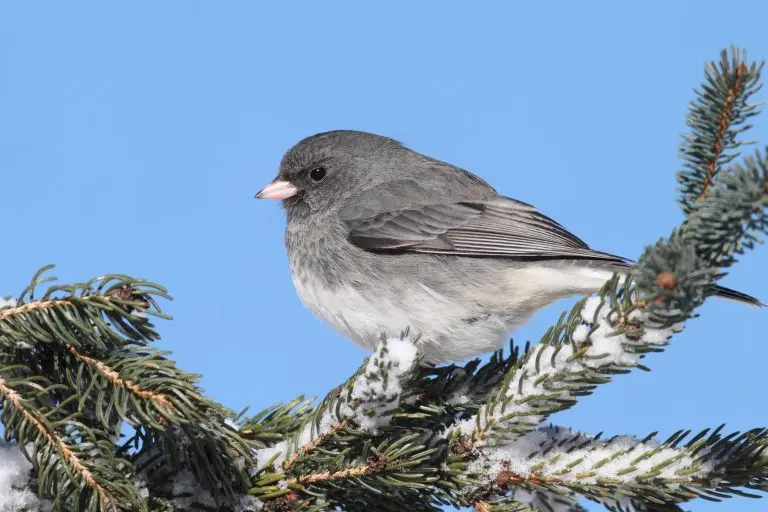
Dark-eyed Juncos are sparrows that are different colors depending on the state. They are generally slate-colored in the east and black, white, and brown in the west.
- Length: 5.5-6.3 in (14-16 cm)
- Weight: 0.6-1.1 oz (18-30 g)
- Wingspan: 7.1-9.8 in (18-25 cm)
Some remain resident all year in the northeast, west and in the Appalachian Mountains. Those that breed in Canada and Alaska migrate south in winter to much of the United States.
They can be found in open and partially wooded areas often on the ground and are common across the continent.
You can attract more Dark-eyed Juncos to backyard feeders with a variety of seeds such as black oil sunflower seeds, nyjer, cracked corn, millet, and peanuts. Platform feeders or scattered on the ground are best.
2. Gray Catbird
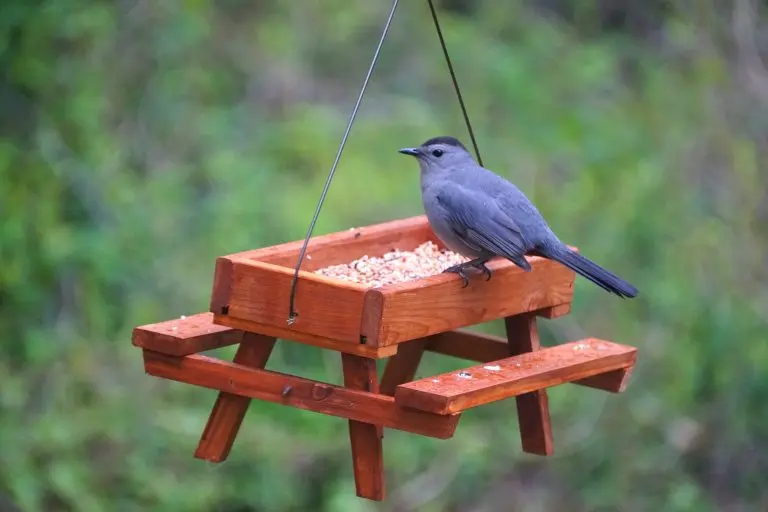
Gray Catbirds are so named because of their distinctive catty mew song that can last for up to 10 minutes. They are medium-sized songbirds with a slate gray coloring, black cap and tail, and a reddish patch under their tails.
- Length: 8.3-9.4 in (21-24 cm)
- Weight: 0.8-2.0 oz (23.2-56.5 g)
- Wingspan: 8.7-11.8 in (22-30 cm)
Gray Catbirds breed in the Mid-west, Eastern States and southern Canada before heading to the Gulf Coast and the Caribbean for winter. Some remain all year along the East Coast.
You can spot Gray Catbirds in dense shrubs, small trees, and along forest edges or hedgerows.
You can attract more Gray Catbirds to your backyard feeders with fruit and fruit trees or shrubs such as dogwood, winterberry, and serviceberry.
3. Black-capped Chickadee
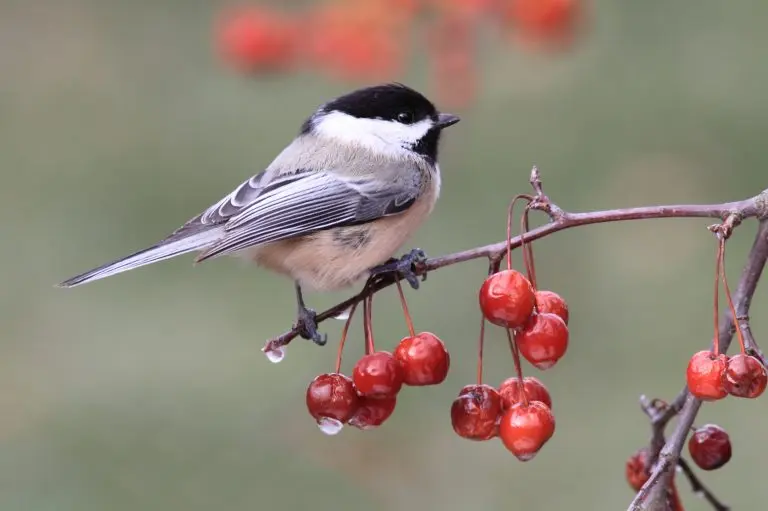
The Black-capped Chickadee is a cute bird with a big round head and tiny body. These birds will happily feed at backyard feeders and will investigate everything including you!
They have black caps and beaks, white cheeks, and are gray on the back, wings, and tail.
- Length: 4.7-5.9 in (12-15 cm)
- Weight: 0.3-0.5 oz (9-14 g)
- Wingspan: 6.3-8.3 in (16-21 cm)
Black-capped Chickadees live in the Northwest, Midwest and Northern States and Canada all year.
They can be found in forests, open woods, parks. Black-capped Chickadees eat seeds, berries and insects, spiders, and suet.
To attract more Black-capped Chickadees to your backyard try suet, sunflower seeds, and peanuts or peanut butter. They will even feed from your hand and are often one of the first birds to discover new feeders. They will also use nest boxes, especially if you fill them with wood shavings.
4. White-breasted Nuthatch
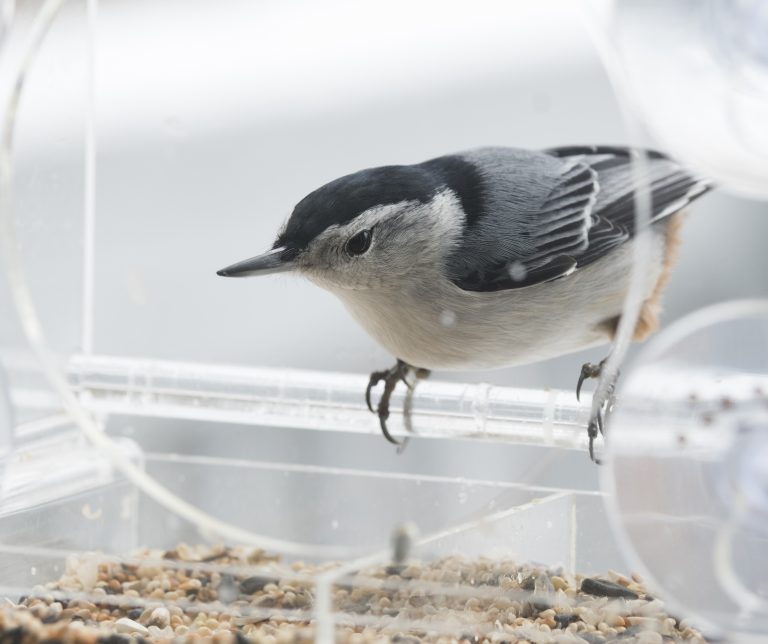
White-breasted Nuthatches are active little birds that are gray-blue on the back and white on the face and belly, with a black cap.
They will often have a chestnut color on the lower belly and under the tail.
- Length: 5.1-5.5 in (13-14 cm)
- Weight: 0.6-1.1 oz (18-30 g)
- Wingspan: 7.9-10.6 in (20-27 cm)
White-breasted Nuthatches live all year in most US States and Southern Canada.
They can be found in deciduous forests, woodland edges, parks, and yards with trees or at feeders. They mainly eat insects including beetles and their larvae, caterpillars, ants, and also spiders.
White-breasted Nuthatches also eat seeds and nuts including acorns, hawthorns, sunflower seeds, and sometimes corn crops.
They jam large nuts and acorns into tree bark and then whack them with their bills to open or ‘hatch’ them to get the seed out.
You can attract more White-breasted Nuthatches to your backyard with sunflower seeds and peanuts on tube feeders or suet feeders.
5. Tufted Titmouse
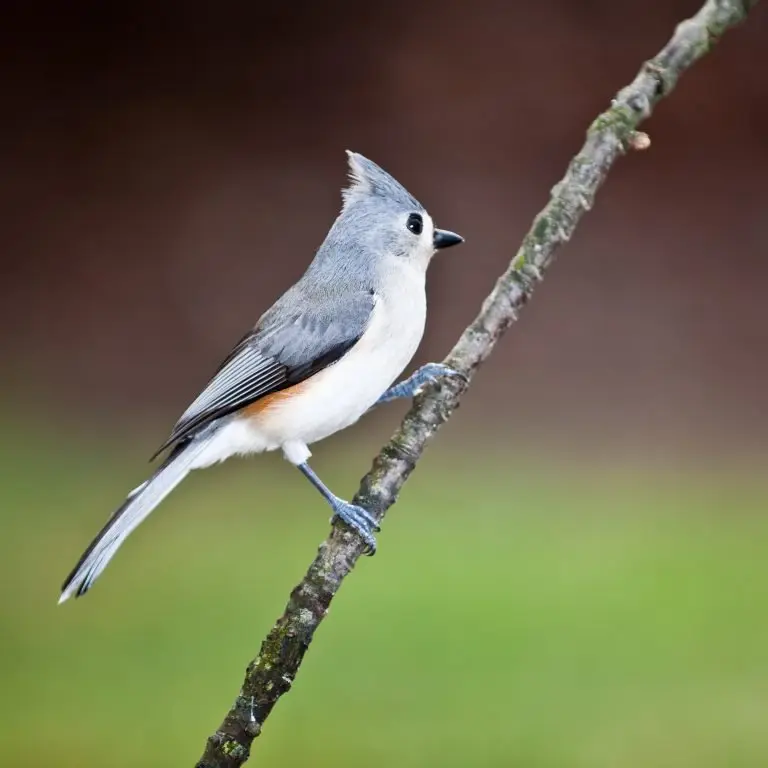
The Tufted Titmouse is gray on the back and white underneath with a cute gray crest and large eyes that often flock with chickadees, nuthatches, and woodpeckers.
- Length: 5.5-6.3 in (14-16 cm)
- Weight: 0.6-0.9 oz (18-26 g)
- Wingspan: 7.9-10.2 in (20-26 cm)
Tufted Titmice live in Eastern and Southeastern States all year
Tufted Titmice can be assertive over smaller birds and are found in woodlands, parks, and at backyard feeders. They eat mostly insects in summer including caterpillars, beetles, ants, and wasps as well as spiders and snails. They will also eat seeds, nuts, and berries and will hoard shelled seeds.
You can attract Tufted Titmice to your backyard feeders with sunflower seeds, suet, and peanuts on tube feeders or suet cages. They will also eat from platform feeders. You can also try putting up a nest box to attract a breeding pair.
The best bird feeder to attract small birds without bully birds such as grackles eating all the seed is this Woodlink caged feeder as the cage is far enough away from the feeder to prevent bigger birds just putting their heads through.
Check out these articles if you want to know more about birds in North America:
- Backyard Birds in Every State – Free Picture ID Printable
- Hummingbirds in North America
- Birds with Red Heads
6. Carolina Chickadee
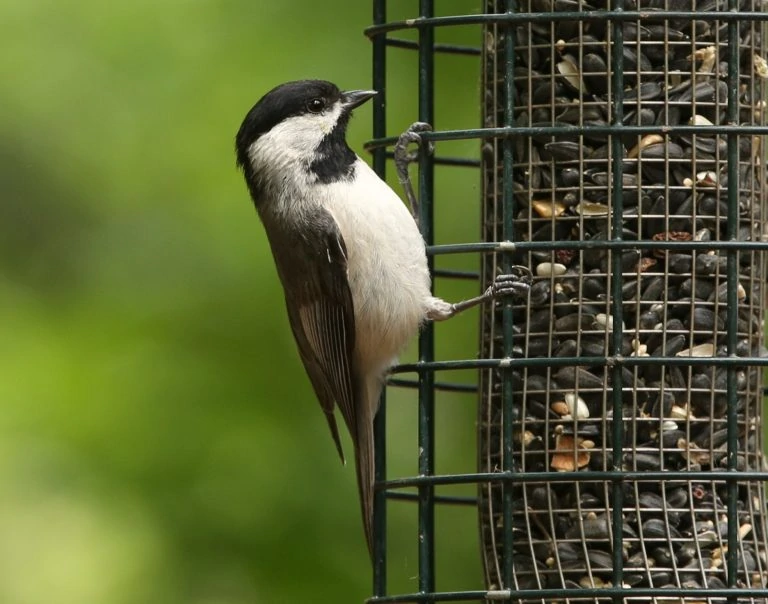
Carolina Chickadees are tiny birds with large heads, black cap and neck, white cheeks and belly, and soft gray back, wings, and tail.
- Length: 3.9-4.7 in (10-12 cm)
- Weight: 0.3-0.4 oz (8-12 g)
- Wingspan: 5.9-7.9 in (15-20 cm)
They are visually very similar to the Black-capped Chickadee and they interbreed where their range overlaps.
They can be found in forested areas, parks, and backyards in eastern and southeastern states all year.
You can attract more Carolina Chickadees to your backyard feeders with Black oil sunflower seeds, Nyjer seeds, suet feeders, or peanuts. They will feed on most types of feeders including tube feeders, suet cages, or platform feeders. They will also nest in nest boxes or nest tubes.
7. Northern Parula
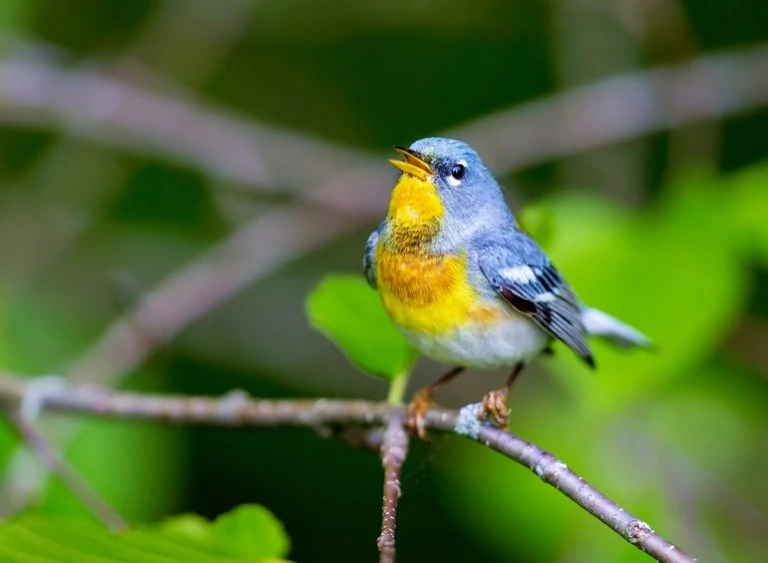
With a colorful contrast of gray and yellow the Northern Parula is a cheery warbler found in woodlands.
They are bluish-gray on the back with a yellow patch on the back and with two white wingbars. Males have a chestnut band that separates the yellow throat and chest that adorns both males and females. Females are paler than males.
- Length: 4.3-4.7 in (11-12 cm)
- Weight: 0.2-0.4 oz (5-11 g)
- Wingspan: 6.3-7.1 in (16-18 cm)
Northern Parulas breed in the Eastern States and southeastern Canada before heading to Central America and the Caribbean for winter. They may remain for winter in southern Florida.
Feeding on insects high up in deciduous forests and building nests in long clumps of lichen and moss that drape from the branches. The best way to spot them is by looking up at large clumps of hanging moss in the summer.
8. Blue-gray Gnatcatcher
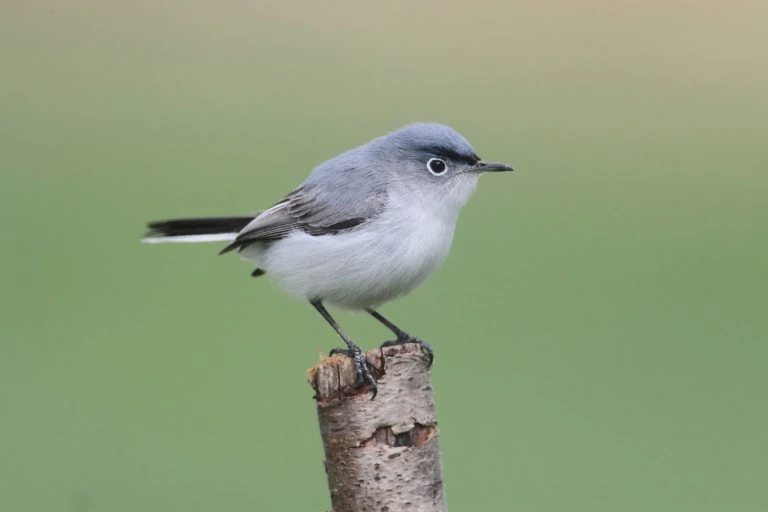
A tiny songbird in a soft blue-gray color on the back and grayish-white underneath. They have a black tail and patches on their wings. Males have a distinctive black ‘V’ shape on their foreheads in summer.
They have long tails and legs and small, thin, straight bills.
- Length: 3.9-4.3 in (10-11 cm)
- Weight: 0.2-0.3 oz (4.8-8.9 g)
- Wingspan: 6.3 in (16 cm)
Blue-gray Gnatcatchers breed in deciduous forests in the Southern and Eastern States before heading south. They do also remain all year in Florida and in southern coastal areas.
Nests of Blue-gray Gnatcatchers look similar to hummingbird nests as they are small and built onto branches so they look like a tree knot covered in lichen.
Feeding on insects and spiders by constantly hopping around and scaring them by flicking their tail up and down.
9. Willow Flycatcher
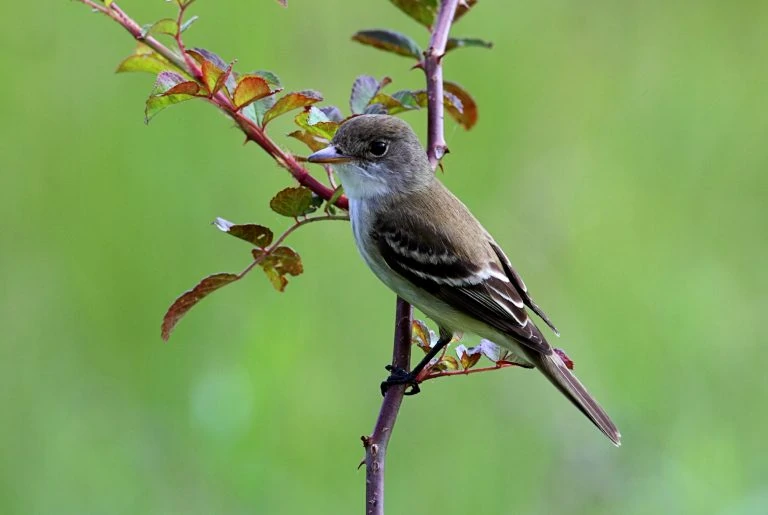
Willow Flycatchers are grayish-brown and with olive tones. Their bellies are gray with yellow tones.
- Length: 5.1-6.7 in (13-17 cm)
- Weight: 0.4-0.6 oz (11-16 g)
- Wingspan: 7.5-9.4 in (19-24 cm)
Willow Flycatchers breed in northwestern states and meadows of the mountainous west before heading to Mexico and Central America. They can also be seen during migration in all US states.
10. Warbling Vireo
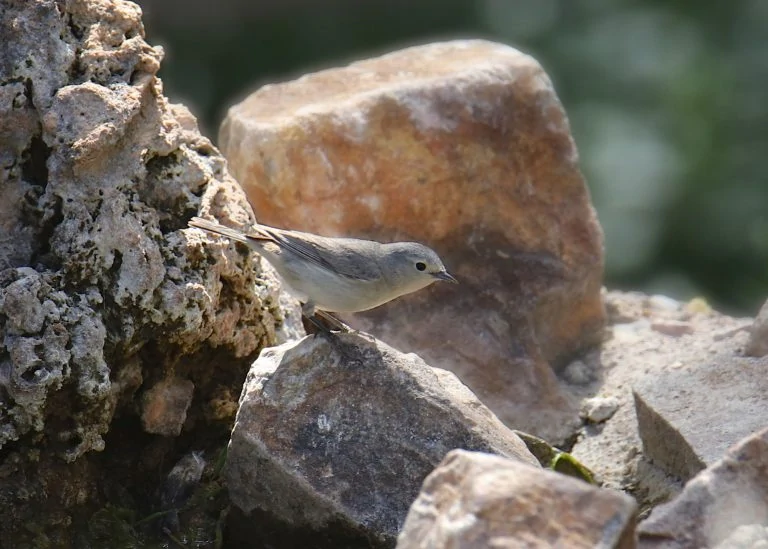
Warbling Vireos are gray and olive birds and lighter whiteish-yellow underneath.
- Length: 4.7-5.1 in (12-13 cm)
- Weight: 0.3-0.6 oz (10-16 g)
- Wingspan: 8.7 in (22 cm)
Warbling Vireos breed over most of the US and into northwestern Canada, except the Gulf Coast. They spend winter in Mexico and Central America.
They can be difficult to find as they stay high up in the trees.
11. Bushtit
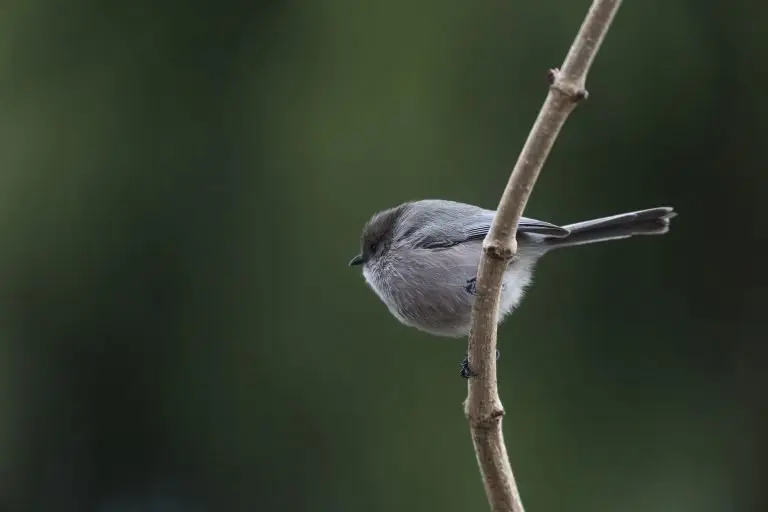
Bushtits are tiny, almost round, soft gray birds with a long tail and stubby bill. They have slight brown tinges to the face and underneath.
- Length: 2.8-3.1 in (7-8 cm)
- Weight: 0.1-0.2 oz (4-6 g)
Bushtits live all year in the Western States.
They can be found in open woodland or scrubby areas, parks, and backyards. Their diet is insects and spiders, such as caterpillars, beetle, wasps, and ants.
Bushtits make amazing hanging nests out of plant material and spider webs that hang down about a foot and may take a month to build.
To attract more bushtits to your yard plant native shrubs and trees and they may visit feeders filled with black oil sunflower seeds, suet, or mealworms from platform feeders.
12. Eastern Wood-Pewee
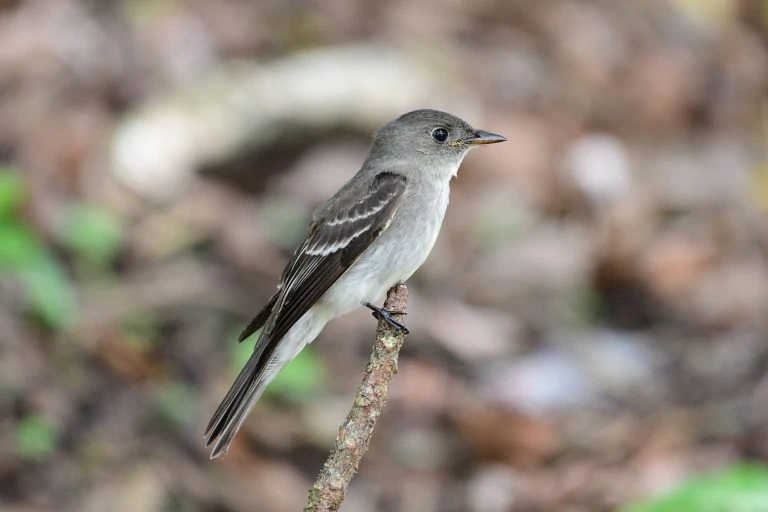
Named after the call they make, the Eastern Wood-Pewee is an unassuming gray flycatcher with off-white undersides.
- Length: 5.9 in (15 cm)
- Weight: 0.3-0.7 oz (10-19 g)
- Wingspan: 9.1-10.2 in (23-26 cm)
Arriving later than most birds from overwintering in South America, the Eastern Wood-Pewee breeds over eastern states and into Canada.
They can often be found perched on exposed branches in forests watching for their prey of small flying insects.
This site is reader-supported and as an Amazon Associate, I earn a commission if you purchase a product I recommend at no extra cost to you.
The best bird feeder to attract small birds without bully birds such as grackles eating all the seed is this Woodlink caged feeder as the cage is far enough away from the feeder to prevent bigger birds just putting their heads through.
Check out these articles if you want to know more about birds in North America:
- Backyard Birds in Every State – Free Picture ID Printable
- Hummingbirds in North America
- Birds with Red Heads
- Small Brown Birds
How to Identify Birds
Here are some tips to help you identify birds so wherever you are birding in Florida you have the knowledge to document and find the bird in a guide:
- Size – Size is the easiest thing to notice about a bird. Birds are often measured in inches or centimeters in guide books. It’s best to take a note of the bird in terms of small, medium, or large to be able to look for it later. A small bird is about the size of a sparrow, a medium bird is about the size of a pigeon and a large bird is the size of a goose.
- Shape – Take note of the silhouette of the bird and jot it down or draw the outline. Look at tail length, bill shape, wing shape, and overall body shape.
- Color pattern – Take a note of the main color of the head, back, belly, and wings, and tail for the main color and then any secondary colors or patterns. Also take note of any patterns such as banding, spots, or highlights.
- Behavior – Are they on the ground or high up in the trees. Are they in flocks or on their own? Can you spot what they are eating?
- Habitat – Woodlands, parks, shrubs, grasslands or meadows, shore or marsh.
- Use a bird identification app such as those created by ebird or Audubon

